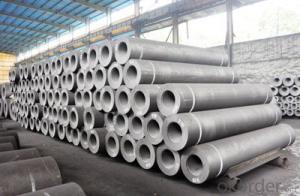Welding, the art of fusing metals together, has been around for centuries. It’s a process that requires precision, skill, and the right tools. One of those essential tools is the graphite electrode. But why is graphite so special? Let’s dive into the world of welding and explore the benefits of using graphite electrodes in this fascinating craft.
First off, graphite electrodes are known for their conductivity. They’re made from pure graphite, which is a form of carbon. This material is a natural conductor of electricity, making it perfect for welding applications. When you’re working with metals, you need a material that can efficiently transfer heat and electricity to ensure a strong and stable bond. Graphite electrodes deliver on this front, providing a consistent and reliable flow of energy.
Another advantage of graphite electrodes is their versatility. They can be used in various welding processes, including shielded metal arc welding (SMAW), gas tungsten arc welding (GTAW), and plasma arc welding (PAW). This flexibility allows welders to choose the right technique for the job, whether they’re working with thick steel plates or delicate, thin materials.
Graphite electrodes also boast a high melting point. This means they can withstand the intense heat generated during the welding process without breaking down or losing their structural integrity. As a result, welders can work for extended periods without needing to replace their electrodes, which saves time and money.
But it’s not just about the physical properties of graphite electrodes. They also have a significant impact on the quality of the weld. The purity of the graphite ensures that the weld is free from impurities, which can weaken the joint and lead to cracks or other defects. A clean, strong weld is crucial for the longevity and safety of any structure or product.
Moreover, graphite electrodes are environmentally friendly. They don’t produce harmful fumes or byproducts during the welding process, making them a safer choice for both the welder and the environment. This eco-friendliness is particularly important in today’s world, where sustainability and environmental protection are top priorities.
Let’s not forget about the cost-effectiveness of graphite electrodes. They’re relatively inexpensive compared to other types of electrodes, such as those made from copper or other metals. This affordability makes them an attractive option for welders working on a budget or for companies looking to cut costs without compromising on quality.
Using graphite electrodes also simplifies the welding process. They require less maintenance than other types of electrodes, reducing the time spent on upkeep and allowing welders to focus on their work. This ease of use is especially beneficial for beginners or those who are new to the welding world.
In addition to all these benefits, graphite electrodes are also known for their longevity. They have a longer lifespan than other types of electrodes, which means you can get more use out of them before needing to replace them. This durability not only saves money but also reduces waste, aligning with the growing trend of reducing our environmental footprint.
But what about the learning curve? Some might argue that using graphite electrodes requires a certain level of skill and knowledge. While it’s true that mastering any welding technique takes practice, graphite electrodes are generally user-friendly and easy to work with. With a bit of guidance and hands-on experience, anyone can learn to wield these tools effectively.
In conclusion, graphite electrodes offer a multitude of benefits for welders of all skill levels. Their conductivity, versatility, high melting point, purity, eco-friendliness, cost-effectiveness, ease of use, and longevity make them an excellent choice for a wide range of welding applications. Whether you’re a seasoned professional or just starting out, incorporating graphite electrodes into your welding toolkit can enhance your work and contribute to a more sustainable and efficient welding process.

